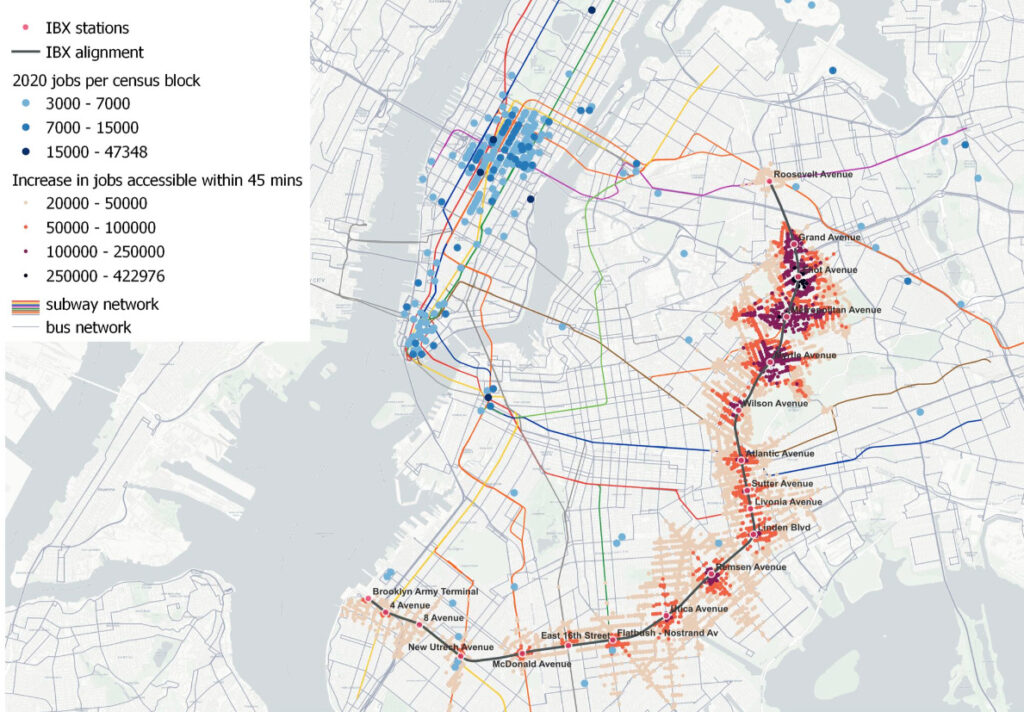After I published the article, No Activity on the Cross Harbor Rail Freight Tunnel Project, saying “The tunnel project appears to be dead,” a Port Authority (PA) media relations representative objected. He said that the study is active and ongoing, but still did not provide any reports.
I learned in early June 2024 that USDOT has been working with the Port Authority “to understand fully the funding and environmental review needs of the Cross Harbor Freight Project.” In other words, after nearly 2½ years, funding for the Tier II EIS had not been secured.
Later in 2024, I plan to write more about the why the proposed Cross Harbor Freight Tunnel is a bad idea and suggest some better uses for money than an EIS review of the tunnel idea.
Now onto the IBX. The Transit Costs Project team at NYU’s Marron Institute recently announced that it has expanded its research to include analysis of the Interborough Express corridor from a land-use perspective, including potential effects on ridership. While this is good news, the even better news is that they have committed to sharing, saying, “Our final article will unveil our comprehensive report, complete with links to exclusive datasets, charts, maps, along with the measures, algorithms and code we’ve developed.”
In the introductory post on the Transit Costs Project’s IBX ;project website, Elif Ensari has posted the following map, indicating—in shades of blue– the jobs in census blocks having over 3,000 jobs in the 2020 census, and indicating—in shades of red—the projected increases in job accessibility within 45 minutes (generally considered an acceptable travel-to-work time) from locations along the IBX corridor.
This data indicates a potential for more work-related trips than were included in the MTA’s IBX ridership estimates.
Also, in view of the relatively high percentage of rental housing along the IBX corridor, and the likelihood that many private leases are for one or two years, there is a high probability that persons having or desiring work in Manhattan will be attracted by the IBX line to housing in this area, increasing IBX ridership. This would not necessarily be gentrification, but more likely—in my opinion—relocation of people already living in Brooklyn and Queens, seeking to shorten their commute or obtain better paying jobs. Such relocation and a shift to greater use of transit in Brooklyn and Queens might be, in part, a reaction to congestion pricing for driving into lower Manhattan, should it eventually be implemented. No doubt, Elif and her colleagues will be considering this possibility. The MTA and its consultants should also do that.
John Pegram
New York, NY



